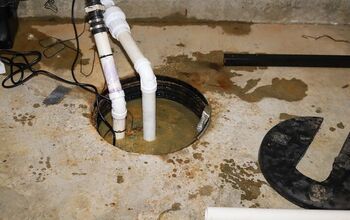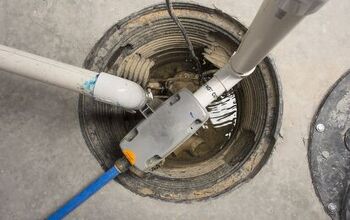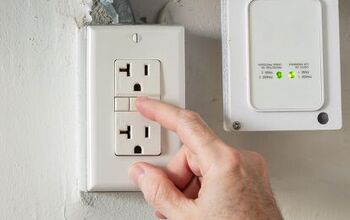Does A Sump Pump Need To Be Vented?

A home sump pump is meant to remove water from an area, typically a basement that floods during the rainy season. These are usually located in a basement or where the structure’s foundation is lower than the natural water table.
If you have a sealed sump pump then it needs to be vented to help remove any radon gas buildup before it’s released in your home, as it’s highly toxic. If your pump is not vented you will need to do this immediately yourself, or hire a professional to do the job for you.
Do You Need to Hire a Plumber?
Get free, zero-commitment quotes from pro contractors near you.

What Is a Sump Pump?
A sump pumps sole purpose is to move water from one place to another. A sump is a constructed pit or basin that floods with water, where the sump pump is located.
The sump pump is equipped with valves that sense water levels or changes in pressure. When the water gets too high, the sump pump automatically pumps the excess water out of the area and away from your property using a discharge line.
What is Radon?
Radon is a naturally occurring gas that results from the decay of radioactive uranium in the Earth. Radon gas is found in igneous rock, soil, and some sources of groundwater. Through this groundwater, it can make its way into your home through the sump pump in the basement.
Radon cannot be smelled, taste, or seen. The only way to know if you have radon in your home is to have your home tested, either through a mail-in kit or by a professional.
It is important to check for radon if you are using a sump pump and have children in your home, as their higher respiration rates put them at greater risk.
Radon in groundwater can enter the home through the sump pump in your basement. For this reason, it is sometimes recommended to vent your sump pump basin. This will draw away the dangerous gas from the soil under your home before it poses any risk to you and your family.
Where Does Sump Pump Water End Up?
The water discharged from a sump pump is routed to a designated area. One such as a dry well, creek, pond, or street drain. It is important that the water is not discharged to an area where it will just return to your home.
Different cities have building codes that direct homeowners to where your sump pump can drain, so it’s best to check these before starting any work.
Types of Sump Pumps
There are a few different varieties of sump pumps that, while all doing the same job, are good for different situations.
Submersible Sump Pumps
These contain both the pump and motor in one unit. These are submerged and closed within the basin in your basement, making them quieter and a space saver than other options.
Because of this submersion, they may not have the same life span as other pumps, but this is still the go-to option for most homes.
Pedestal Sump Pumps
Coming in two parts, they have a separate motor and pump. The motor on these units sits on a pedestal above the basin with a hose running inside to the pump.
The pump then sends the water through the hose and out to the drain area. These pumps will last longer because the motor is not submerged in water constantly and are easier to access for maintenance.
Selecting the Right Sump Pump
When shopping for a sump pump you will find a lot of variance in levels of horsepower offered. You will want to choose a pump with enough horsepower to handle your level of flooding, otherwise you will still be at risk.
If you choose too high a level of horsepower for your needs, then your sump pump will cycle, turning on and off repeatedly, and lowering the life span of the motor.
In most average-sized homes, with an average level of rainfall, a 1/3 horsepower submersible pump will work. If your home is deeper into the water table, a ½ horsepower sump pump will help with the extra load.
Sump pumps with 13,000 GPH motors are needed for high flooding areas. Homes with major flooding and located in a high rainfall area will benefit from this strong pump. It is also used for outdoor and commercial uses, where quick water evacuation would be needed.
Venting the Sump Pump
If your sump pump is sealed it is necessary to set up a venting system to remove radon gas buildup from entering your home.
Step 1
Find out where your home’s venting system is located. There are one or more main vents that run inside interior walls and lead upwards, exiting through the roof. These are what the caps on your roof are indicating.
Step 2
Measure the amount of PVC piping you will need by drawing out the trajectory of your vent pipe. Start with the location of the sealed pump cover until you reach the homes venting system. Take into consideration all twists and turns that will need angled pieces.
Minimize the best you can any angles that your venting will take. Use as many straight lines as possible to give the radon gas the easiest escape route.
If you can run the vent pipe directly upwards to the underside of the main floor, installing it between the joists to reach the main vent system, this would be the best option.
Step 3
Add 1 inch to every section where there is a joint, to compensate for the length of PVC that will be inserted within. When purchasing your PVC, get a few extra inches in length to allow for any errors in measuring.
Step 4
Cut all your PVC pipe to size and lay it out to make sure your measurements are correct before gluing. Use a PVC cleaner to remove any debris from the ends of the pipe and the joints.
Apply a coating of PVC glue to both the inside of the PVC vent ring on the sump pump as well as the outside of the PVC vent pipe. Wait a few seconds for the glue to get tacky and then quickly slide the pipe into the vent ring, holding until the glue sets.
Step 5
Repeat this process while connecting all the other pieces of your venting system. Make sure to clean the inside of the joints as well as the outside contact points of the PVC pipe.
When cutting the PVC pipe allow for the extra length needed for inserting into joints.
Step 6
The final step is to put the vent cap over the vent cover that leads out of the home. This will protect it from rainfall and from debris, keeping your system clean.
Do You Need to Hire a Plumber?
Get free, zero-commitment quotes from pro contractors near you.

Related Questions
Should I Use a Battery-operated Backup or Water-powered Backup Sump Pump?
A battery-operated backup will allow your sump pump to work even when the power is out, like during a big storm. When the power goes out and water rises in the basin, the float switch is triggered which starts the battery operation.A water-powered backup clears flooding using increased water pressure. There is controversy over using these as the additional use of water will raise your water bill significantly. As such, some cities do not allow these. The perks are that there is no need to monitor this backup or replace any batteries.
How Long Do Sump Pumps Last?
Sump pumps need replacing every 10 years. Submersible sump pumps may need replacing sooner than that as the motor is submerged in water far more often than pedestal pumps.
Should a Sump Pump Always Have Water in It?
Most sumps do have a little bit of water in them, as the sump pump doesn’t lay flush with the bottom of the sump.

Sean Jarvis is an interior decorator, writer, and expert handyman. Well versed in everything home improvement, he is a savant at manipulating words and spaces and upgrading everything around him. Sean specializes in writing concise guides about appliance repair and installation, home and lifestyle, and other residential projects.
More by Sean Jarvis



























